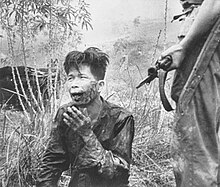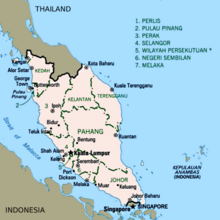The Story of Rhodesia/Colony of Southern Rhodesia Post WWII
1946 Elections - First Elections since WWII
[edit | edit source]During the war a number of changes to the franchise had been made. The arrival of large numbers of British citizens to train as pilots for the Royal Air Force from 1940 led to a sudden increase in the electorate. Many Rhodesians felt that the forces personnel ought not to have the vote, given that their presence in Rhodesia was transitory and they had no long-term commitment. Therefore, the Assembly passed the Electoral Amendment Act 1941 which disfranchised them. The Act also disfranchised British citizens from other dominions who were not prepared to make a declaration of willingness to serve in Southern Rhodesia's defence forces. A third provision of the Act was to extend a previous lifetime disqualification of those sentenced to imprisonment to those given suspended prison sentences.
In the Civil Disabilities Act 1942, anyone convicted of treasonable or seditious practices, those who had deserted from or evaded service in the Army, or who were cashiered or dishonourably discharged, was disqualified from registration as a voter. To cope with the large number of Rhodesians serving away from the colony in the armed forces, the Active Service Voters Act 1943 permitted them to record their votes in a general election. They were permitted to vote for a political party rather than an individual candidate.
The twists and turns within the Rhodesia Labour Party which led it to divide into two parties at this election are recounted in the article on the Rhodesia Labour Party.
Jacob Smit, who had been an ally of Huggins in Reform Party days and previously served at the Ministry of Finance, went into opposition early in 1944. He joined a group of conservatives who were developing a new political party on the principles of economy in public spending, free enterprise, and seeking dominion status within the British Empire. Smit was soon appointed the Leader of this group, which named itself the Southern Rhodesia Liberal Party.
1948 Elections
[edit | edit source]The 1946 election had left the United Party in a precarious position in an overall minority in the Southern Rhodesian Legislative Assembly, and reliant on the support of the Rhodesia Labour Party. Huggins was therefore seeking an opportunity to re-establish an overall majority. However, Huggins knew from his experience in 1934 that he needed to justify asking for a dissolution of the Assembly and a general election, as the Governor was not necessarily willing to grant one merely because it had been asked for.
Early in 1948, Huggins made his move by proposing that his own United Party merge with the opposition Liberal Party (which was a right-wing organisation). He then went to the Legislative Assembly and put down a motion of confidence in his government which endorsed all its policies for the full term of the Assembly. The Liberal Party, sensing a trap, agreed to the principle of fusion of the two parties but insisted that it be on the basis of Liberal Party policy. When the vote of confidence debate was concluded on 6 February, Huggins accepted an amendment moved by the Rhodesia Labour Party, and the confidence motion then passed without a division. Huggins had lost his chance for an election but gained endorsement of his government.
This situation did not last long. In July, the Coinage and Currency Bill was defeated by one vote on a clause which would have allowed the Currency Board to provide accommodation. Although this was a minor matter, Huggins argued that it was an issue of confidence because this provision had been agreed with the governments of Northern Rhodesia and Nyasaland in the Central African Council; as negotiations to form a new majority government failed, the Governor granted a dissolution.
Supporting Huggins' position, the South African general election in May that year had seen a win by the National Party which largely represented Afrikaners. This election marked a transfer of power away from the English-speaking South Africans and shocked the mostly British descended Southern Rhodesians, who recoiled from the Liberal Party who were backed by the small Rhodesian Afrikaner community; the Liberal Party's policy on race was similar to the National Party's policy of Apartheid.
Voters tended not to blame the government for the economic difficulties and petrol shortages which had affected Rhodesia in the years since the war, and the renewed push towards federation with Northern Rhodesia and Nyasaland also encouraged support for the United Party. In the end, it delivered a landslide for Huggins; Liberal Party leader Jacob Smit lost his seat.
Malayan Emergency - Outbreak of War
[edit | edit source]
The Malayan Emergency was a guerrilla war between the Federation of Malaya—a protectorate of Britain until August 1957, and part of the Commonwealth of Nations thereafter[1]—and the Malayan National Liberation Army (MNLA), the armed wing of the Malayan Communist Party (MCP). The MNLA sought to topple the Malayan government and force the British out, while the Commonwealth worked to prevent this.[2] The conflict had its roots in the Second World War, in which groups of local ethnic Chinese fought alongside Britain's limited forces in the country against the occupying Imperial Japanese; these Malayan Chinese subscribed to communist political thinking, and called themselves the Malayan Peoples' Anti-Japanese Army.[3]
Soon after Japan was defeated, the communist fighters renamed themselves the Malayan National Liberation Army, and began to agitate against British rule. Using the arms that Britain had given them—which they had cached, and then subsequently retrieved—they formed themselves into eight regiments, and began a campaign of Maoist-style rural subversion, their intent being to politicise the villagers and gain popular support, which they could then use to take control of Malayan cities.[3] In March 1948, the MCP called on the Malayan people to rise up against the British. Three months later, on 16 June, MNLA guerrillas killed three British rubber plantation managers in Perak province. The British High Commissioner in Malaya, Sir Edward Gent, declared a state of emergency two days afterwards, marking the beginning of the Malayan Emergency.[2]
In addition to British and Malayan units and personnel, the Commonwealth forces in Malaya included Australians, New Zealanders, Gurkhas, Fijians, Nyasalanders, and Northern and Southern Rhodesians.[4] Southern Rhodesia had been self-governing since 1923. It ran its own affairs in most matters, including defence, but it was still constitutionally bound to Whitehall insofar as foreign affairs were concerned. The Southern Rhodesian government was therefore able to exercise a large degree of independence militarily, though diplomatically it came under the British flag.[5]
"C" Squadron, Special Air Service (1951–53)
[edit | edit source]
The Special Air Service (SAS) commando unit was formed by the British Army in 1941, during the North African campaign of the Second World War. Including some Southern Rhodesians in its ranks, it served for the rest of the conflict, also operating in Italy and on the European Western Front. It was disbanded by the British government in October 1945,[6] and reinstituted in 1950 to serve in the Korean War. The situation in Korea had changed by the end of its three-month training period, however, and it was sent to Malaya instead. There it was placed under the command of a British officer, Major Mike Calvert.[7]
Early the following year, Calvert travelled to Southern Rhodesia on a recruitment visit. Roughly 1,000 white Southern Rhodesians, SAS veterans among them, volunteered to go to Malaya;[6] from these, about 100 were chosen to form an all-Southern Rhodesian unit.[8] This was the first SAS squadron from a British colony or dominion.[9] Led by the 24-year-old Temporary Captain Peter Walls, the volunteers arrived in Malaya in March 1951. Walls was promoted to major soon after he and his men disembarked at Singapore.[10] The SAS already had two Squadrons, "A" and "B", so the Southern Rhodesians became "C" Squadron,[8] known more informally as the Rhodesian SAS.[11]
Engaged largely in counter-insurgency warfare, the Southern Rhodesians became well-drilled in the relevant principles and doctrines.[12] They noticeably bolstered the hitherto thinly spread ranks of the SAS in Malaya, and performed strongly in the eyes of their superiors, though British Major C L "Dare" Newell believed that their attitude towards "the aborigines" was colder than that of the British soldiers. Barbara Cole, who wrote a history of the Rhodesian SAS, says by contrast that the Rhodesians became close friends with the Fijians they served alongside, and spent far more time socialising with black and mixed-race soldiers off-duty than their British counterparts did.[12]
In March 1953, after serving their required two years in Malaya, the men of "C" Squadron returned home.[10] They were replaced in 1955 by a squadron from New Zealand.[6] Three members of "C" Squadron—Sergeant O H Ernst, and Corporals J B Davies and V E Visagie—were killed while in Malaya.[13] For his services during the emergency, Walls was awarded an MBE.[10]
References
[edit | edit source]- ↑ Federation of Malaya Independence Act 1957
- ↑ a b Arnold & Wiener 2012, pp. 131–132
- ↑ a b Binda 2007, pp. 126–127
- ↑ Scurr 2005, p. 5
- ↑ Wood 2005, p. 9
- ↑ a b c Shortt & McBride 1981, p. 16
- ↑ Daily Telegraph 2002
- ↑ a b Binda 2007, p. 127
- ↑ Geraghty 1980, p. 220
- ↑ a b c RLI Regimental Association
- ↑ Geraghty 1980, pp. 220–222, 227
- ↑ a b MacKenzie 2011, pp. 66–67
- ↑ Rhodesian Army Association